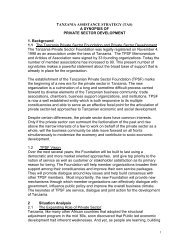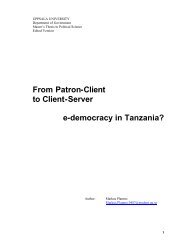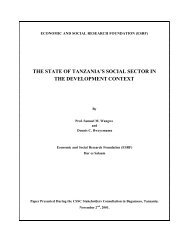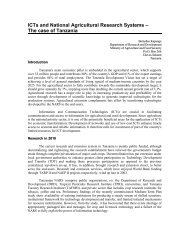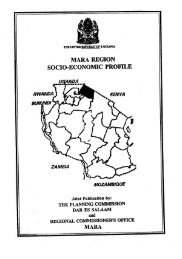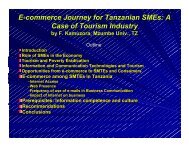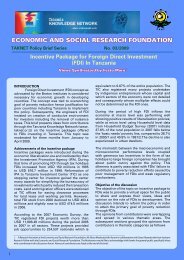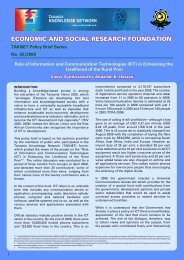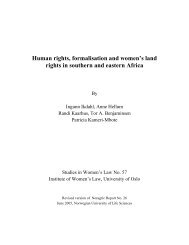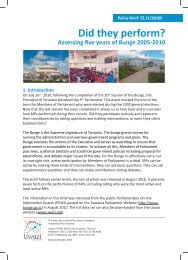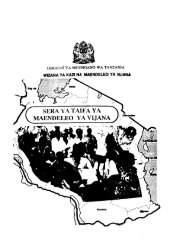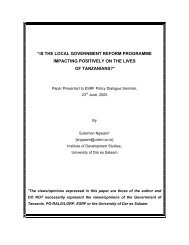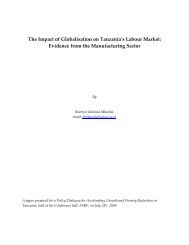Kilimanjaro - Tanzania Online Gateway
Kilimanjaro - Tanzania Online Gateway
Kilimanjaro - Tanzania Online Gateway
You also want an ePaper? Increase the reach of your titles
YUMPU automatically turns print PDFs into web optimized ePapers that Google loves.
TABLE XVII:<br />
DAM IRRIGATION WATER SOURCES<br />
Location<br />
Capacity of Storage<br />
(M)<br />
Volume (m 3 )<br />
Pare District.<br />
1. Nyumba ya Mungu 1,140,000 603,000<br />
2. Shungula 24,700 18,733<br />
3. Dindira 274 14,411<br />
4. Shatto 739 55,800<br />
5. Ranzi 286 18,780<br />
Moshi District<br />
1. Sholo 90 21,000<br />
2. Urenga 180 35,000<br />
3. Mworoworo 158 26,950<br />
4. Ukiashi 158 67,760<br />
Source:<br />
Regional Agriculture and Livestock Office, Moshi, <strong>Kilimanjaro</strong> Region<br />
(i)<br />
Lower Moshi:<br />
The Lower Moshi Irrigation Project began in 1984, and<br />
was completed in April 1987. The project study involved<br />
irrigation potential areas of Rau River system (ha.2300)<br />
Miwaleni Pump Scheme (ha.2000), Himo River system<br />
(ha.1000) and ground water system (ha.1020). Crops<br />
grown under the Lower Moshi scheme include paddy<br />
900-1100 hectares cultivated during rain-season, 400<br />
hectares during dry season while 900 hectares are put<br />
under maize. Perennial crops occupy 300 hectares. Rice<br />
production in Lower Moshi Irrigation Project, has<br />
surpassed the target put at 4.5 tons per hectare to register<br />
an average of 6.5 tons per hectare recorded in 1990.<br />
Problems facing the project include, inadequate water<br />
53



